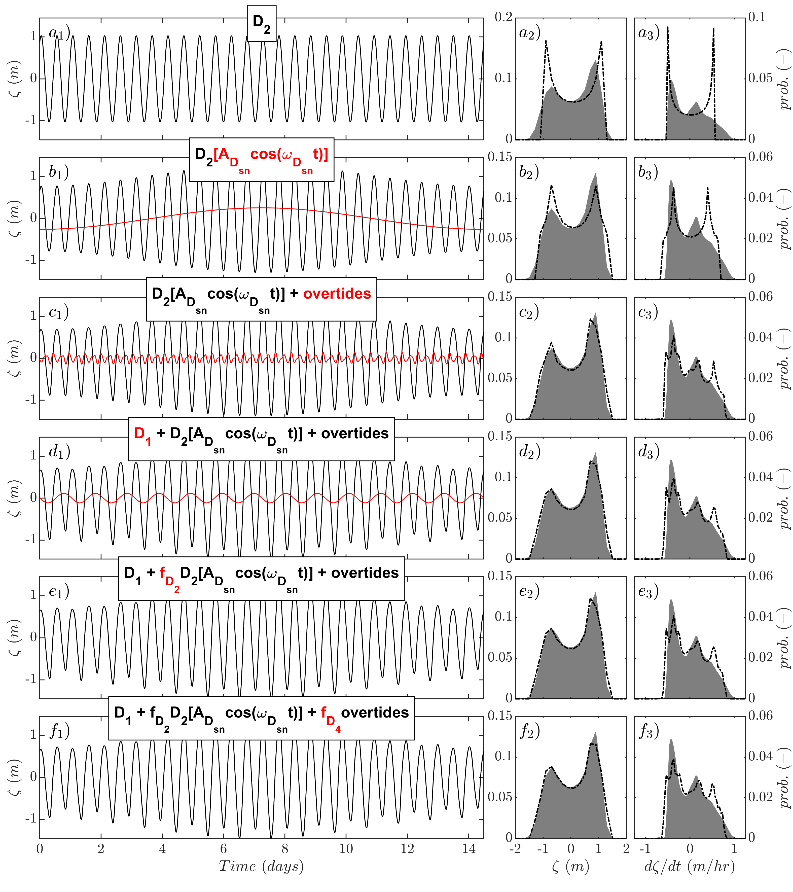A. Schrijvershof1,2*, D.S. van Maren2,3,4, A.J.F. Hoitink1
1 Wageningen University & Reserach
2 Deltares
3 Delft University of Technology
4 State Key Lab of Estuarine and Coastal Research, East China Normal University
*corresponding author:
Current tidal input reduction approaches applied for accelerated morphological simulations aim at capturing the dominant tidal forces in a single or double representative tidal cycle, often referred to as a "morphological tide". The existing methods may provide appropriate boundary conditions to simulate representative residual transport fluxes and the resulting morphological changes of the tidal channels. However, heavily simplified tidal signals fail to represent the tidal extremes. They poorly represent intertidal areas, which exert a major impact on the development of tidal asymmetry and the associated residual transport fluxes.
Here, we aim to develop a generic method to construct a synthetic representative tidal signal that incorporates tidal extremes. Such a synthetic cycle should adhere to several criteria to make it applicable for long-term (i.e. subdecadal) accelerated simulations. The synthetic signal should: (1) represent the original signal, particularly preserving asymmetries present in the original signal; (2) be exactly periodic, to ensure coherency between consecutive cycles and to control the relative phasing with other types of forcings (e.g. wind, waves, discharge); and (3) remain valid during the long-term simulations in which the bathymetry in the modelling domain changes shape.
The starting point for the construction of the synthetic signal is a fortnightly modulation of the semi-diurnal tide to represent spring-neap variations, while conserving periodicity. Diurnal tides and higher harmonics of the semi-diurnal tide are included to represent the asymmetry of the tide. The amplitudes are then scaled to give a best fit to the full tidal signal. Statistical measures of the synthetic signal show that it gives a better representation of the amplitude variation and asymmetries present in the original signal, compared to existing approaches of tidal input reduction. A hydrodynamically validated depth-averaged model of the Ems estuary (The Netherlands) demonstrates the effects of different tidal input reduction techniques on residual sediment transport patterns. Adopting the new approach, the shape of the tidal wave is better represented over the entire length of the estuary, and inundation of shallow parts of the basin is modelled in closer resemblance to the real-world intertidal dynamics.

Figure 1: Step-wise construction of the synthetic spring-neap cycle; showing time series (left) and histograms of the synthetic signal (dotted lines) and the full tidal signal (gray patches).
I. Surname1*, F.N. Another-Surname2 , Y. Next-Surname2
1 University Name, Country; 2 Organization Name, Country
* Corresponding author: mail.name@organization.org


